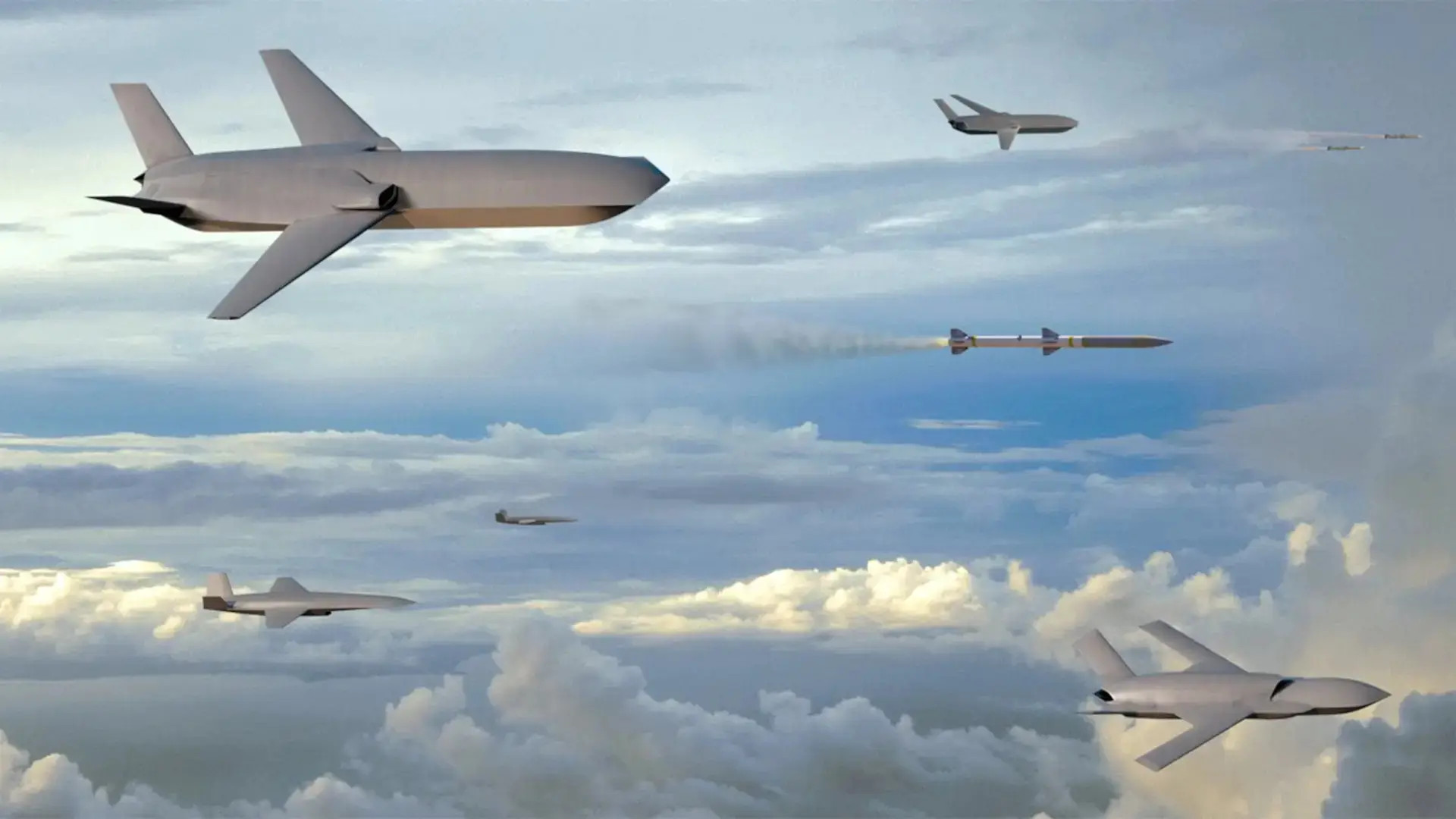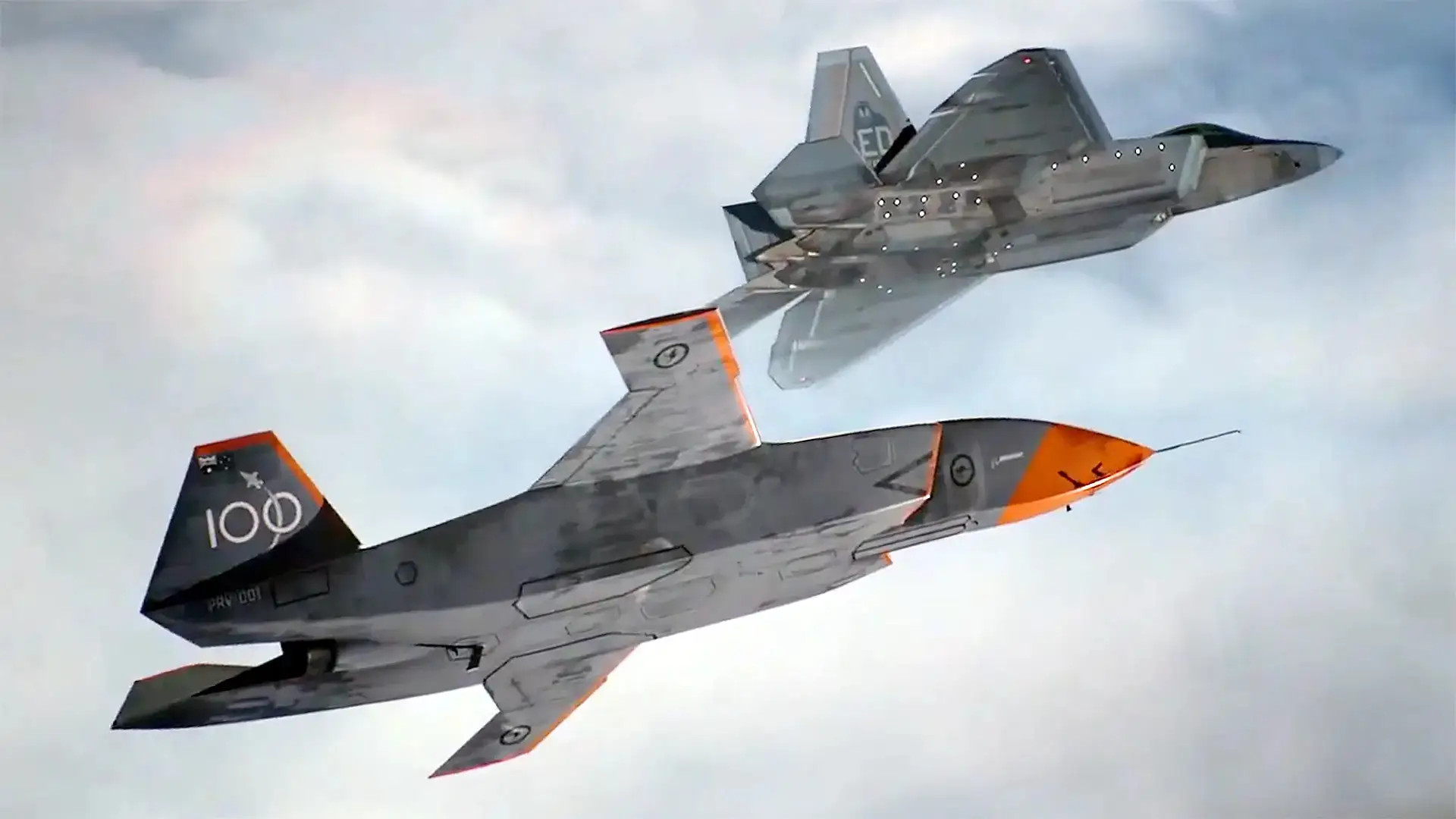The U.S. Air Force is looking at welcoming foreign allies and partners into “increment two” of its Collaborative Combat Aircraft drone program, or CCA, which it expects to kick off in the next year or so. The service also now plans to extend its CCA-related relationships within the U.S. military to include U.S. Special Operations Command later this year.
The Air Force’s plans to include key allies in CCA mirrors the case The War Zone laid out for doing exactly that in a in-depth feature last year, which you can check out here.
Secretary of the Air Force Frank Kendall first discussed foreign participation in the second increment of CCA at a roundtable on the sidelines Air & Space Forces Association’s 2024 Warfare Symposium. Other Air Force officials also provided additional details at other roundtables and panel talks at the event today, all of which The War Zone attended.
“[CCA] increment two is moving forward,” Kendall said. “We’re going to be awarding increment two efforts [contracts] in the next fiscal year, FY25 [Fiscal Year 2025], to do what we’re doing now essentially with the original five contractors,” which is “concept definition, preliminary design” type of work.

Boeing, General Atomics, Lockheed Martin, Northrop Grumman, and Anduril are the companies that have already received CCA contracts as part of increment one, which is now poised to enter a new phase that will involve a down-select process. Increment one of the CCA program is focused on selecting an initial drone design that will hopefully be put into production by around 2028. You can read more about this here.
Kendall further disclosed that increment two, which will be a second tranche of drones, will be the first segment of the CCA program to possibly include participation by foreign allies and partners. When asked to elaborate about which countries could be brought in, the Secretary said only that “the tendency will be to [invite] our closest partners, our strategic partners” and that this would be a “natural” decision for a program of this type.
“So, for increment two … we’ll be kicking off a process with industry to really start to narrow in on what is increment two going to be, what’s it going to be able to do,” Andrew Hunter, Assistant Secretary of the Air Force for Acquisition, Technology and Logistics, elaborated during a separate roundtable at the Warfare Symposium today. “And because we’re on the front end of that, that’s why we think there’s so much opportunity to to really bring partners and allies into the conversation very early on to make them part of that process as well.”
Hunter noted that international participation in increment two would not necessarily involve everyone working toward acquiring exactly the same air vehicles with the same capabilities, though it could. He drew comparisons to existing active Air Force collaboration with the U.S. Navy and U.S. Marine Corps on their respective CCA-type programs.
“I talked about the architectures, and architectures can cut across increments. Well you can readily see then that we have our increments that are optimized for United States Air Force,” Hunter said. “The United States Navy and Marine Corps are also looking at collaborative combat aircraft systems” and “I think of them as their increments,” but “using this sort of common architectures that we’ve developed, and that they can contribute to.”

“I could see it operating very much the same way with the partners and allies. So their system could be, you could think of it as an increment of CCA that’s unique to them potentially, or that they could market to other capable partners around the world,” he continued. “But leveraging the architectures that have been produced through our collaborative combat aircraft program.”
Hunter pointed out that just gaining access to these kinds of shared technologies, and the U.S. vendor base that supports them, could be attractive to foreign allies and partners.
“So when we talk about the CCA vendors, we often talk about kind of the five that are working on increment one air vehicle[s]. But there is a another slew of contractors that are also part of the vendor base for CCA … many of them working specifically on software,” Hunter explained. “That is independent of individual increments. That is a core capability. … it is one of the foundational architectures of the CCA effort.”
“And it’s one of the things that once our crew discusses working with international partners, right, that’s a capability that we can make available to them,” he continued. “So that’s significant part of how we envision collaborating with allies and partners.”
It’s worth noting that the Air Force has already acquired a Boeing MQ-28 Ghost Bat loyal wingman-type drone, a design originally developed for the Royal Australia Air Force, to support autonomy testing and other research and development efforts. The MQ-28 has been presented as a potential CCA contender in the past, as well. Just last week, the Australia government committed $260 million in new funding to acquire three additional MQ-28s in an improved Mk 2 configuration and to support the development of additional systems for these drones.

During a panel talk about CCAs at the Warfare Symposium today, Brig. Gen. Jason Voorheis, the Air Force’s Program Executive Officer for Fighters and Advanced Aircraft, said that “the CCA program has consortium of over 30 industry partners that are participating across autonomy, air vehicles, vision systems and software software development.”
At that same talk, Voorheis also announced that the Air Force was looking to expand its existing tri-service CCA agreement with the Navy and the Marine Corps to include U.S. Special Operations Command. The existing arrangement is centered on collaboration “in four key areas: mission system architecture, autonomy architecture, ground segments, and data links,” he noted.

The Navy has previous said that a key goal of all of this cooperation is to enable the seamless transfer of control of CCAs, whatever service might own them, back and forth as the situation demands during future operations, increasing flexibility.
When it comes to foreign participation in the CCA program, the The War Zone previously made the case of how the trilateral Australia-United Kingdom-United States (AUKUS) defense cooperation agreement, specifically, could provide an ideal framework for just this kind of cooperation. Australia and the United Kingdom are two of America’s strongest allies and are certainly in line with Secretary Kendall’s mention of “closest partners” and “strategic partners.”
In outlining that case, we further pointed out how an ally or partner might not end up operating the same kinds of CCAs as the Air Force or other branches of the U.S. military, but could still leverage common technologies. This, in turn, would offer a slew of potential benefits for all parties across the development, acquisition, operation, and sustainment of these drones. This is exactly in line with the flexible framework Assistant Secretary Hunter described when talking about how the Air Force is currently looking to incorporate foreign allies and partners into the CCA program.
In the end, it will be very interesting to see exactly how foreign allies and partners, and which ones, actually become involved in the CCA increment 2, which could be just the start of international cooperation on the program.
Contact the author: joe@twz.com
